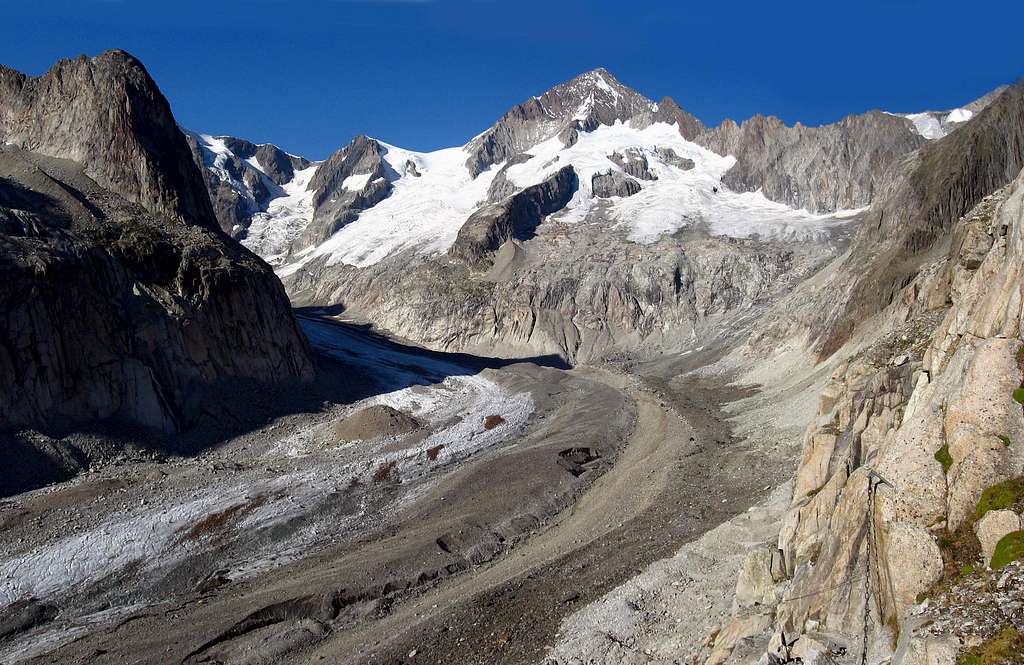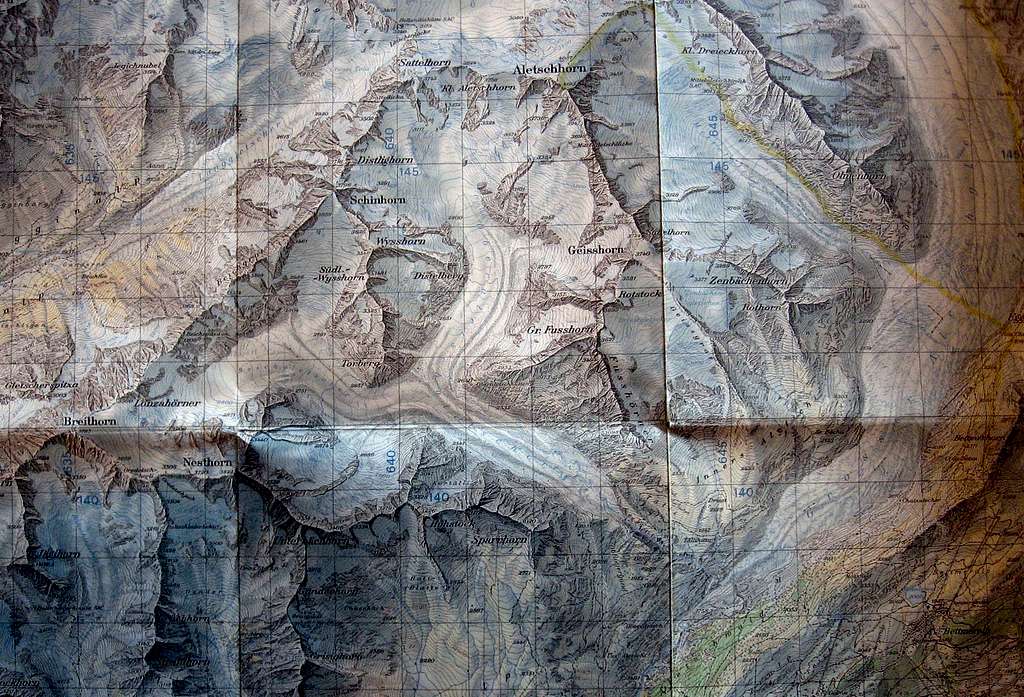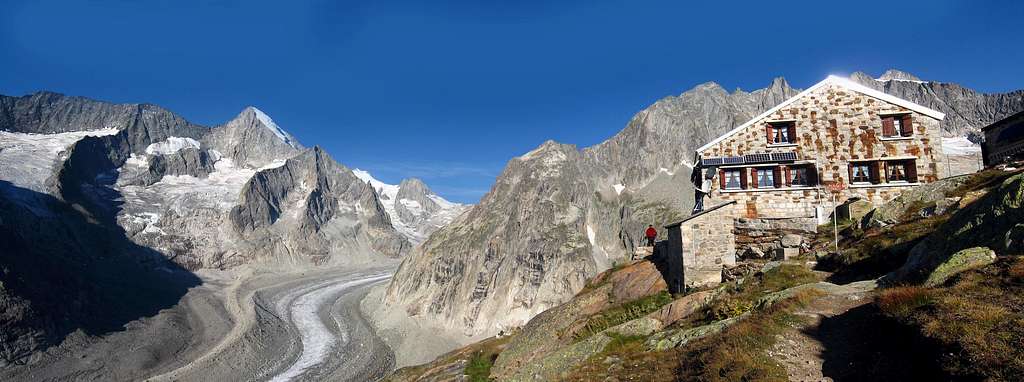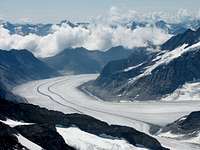-
 55783 Hits
55783 Hits
-
 91.04% Score
91.04% Score
-
 35 Votes
35 Votes
|
|
Mountain/Rock |
|---|---|
|
|
46.46670°N / 7.98330°E |
|
|
Mountaineering |
|
|
13756 ft / 4193 m |
|
|
Overview
Aletschhorn
What's New on this Page?
* Jan 6, 2023 - Ownership switched by Antonio Giani
* Jan 6, 2023 - Page under review
- The Aletschhorn is the second highest peak in the Bernese Alps.
- First climbed in 1859 by Francis Tuckett, J.J. Bennen, P. Bohren, Victor Tairraz
- The Aletsch-Glacier next to it is the longest in Europe, the "Konkordia Platz" in front of it is the largest Glacier-Get-together in the Alps.
- The views to all the famous neighbors like Eiger, Monch and Jungfrau are fantastic as well as to the other side to the Wallis and even to France with the Mt. Blanc.
- It sports many routes, of different grades, it can done with alpine skis, by foot, climbing the ice on the North Face or on Rocky ridges.
- Many huts are located nearby to accommodate you before your summit attempt.
Getting there
Starting points are very far. It's impossible to get the top in one day. Huts and bivouacs are very far too. There are at least 3 starting point: From Jungfraujock: Approach usefull only for the north wall. The route has the problem that during the return must climb up 500 meters from the Grosser Aletschfirn to the rail station. Approach is however very long in distance. From Bettmeralp: For who want to climb the mountain along the Mittelaletschgletscher. From the top cablecar station of "Bettmeralp", get down to the Aletschgletscher. Cross it till the opposite side. Reach the Mittelaletschgletscher and avoiding it climb along its left side following stone piles until the Mittelaletsch biwak. From here "normal route" to the top. Very long journey 5h'00/6h'00 + 4h'00/5h'00.
I punti di partenza sono molto lontani, molto lontani anche i rifugi ei bivacchi. Ci sono almeno 3 punti di partenza: Da Jungfraujock: Avvicinamento utile solo per la parete nord. Il percorso ha il problema che durante il ritorno deve salire 500 metri dal Grosser Aletschfirn alla stazione ferroviaria. L'avvicinamento è comunque molto lungo. Da Bettmeralp: Per chi vuole scalare la montagna lungo il Mittelaletschgletscher. Dalla stazione a monte della funivia "Bettmeralp" si scende all'Aletschgletscher. Attraversarlo fino al lato opposto. Raggiungere il Mittelaletschgletscher ed evitarlo si sale lungo il suo lato sinistro seguendo mucchi di pietra fino al bivacco Mittelaletsch. Da qui "via normale" fino in cima. Percorso molto lungo 5h'00/6h'00 + 4h'00/5h'00
Da Belalp: Avvicinamento per la via normale sul versante SW. Dal paese di "Belalp", sentiero per la "Oberaletschhütte". Da qui scendere alla base dell'Oberaletschgletscher e poi in vetta. Durante il ritorno, bisogna salire 100 m fino a raggiungere il rifugio. Viaggio molto lungo, anche più lungo di altri. 3h'00/4h'00 + 7h'00/8h'00 Sul versante ovest della montagna, sul Lotschenlücke si trova un rifugio chiamato Hollandiahütte. Vicino alla vetta, ma utile solo per chi vuole salire la cresta NW. Non comunemente scalato.
Accommodation

Mountain Conditions
- Grindelwald:Accommodation, Weather and Snow reports, Webcam, U-Name-It ...
- Bergsteigerzentrum Grindelwald: Montaineers Info: Phone Numbers, Website, etc.
- Basislager.ch: Log of previous attempts,including description of ice conditions (German !)
Meteo
Aletschgletscher
Here are some photos from the longest glacier in the Alps.External Links
- Peakware Counterpart to this site More infos, more Summit logs
- slide show (scroll down for english captions) of my ascent in May 2003
- Aletschhorn at www.4000er.de Images, routes, coordinates and more information about the highest peaks of the Alps













